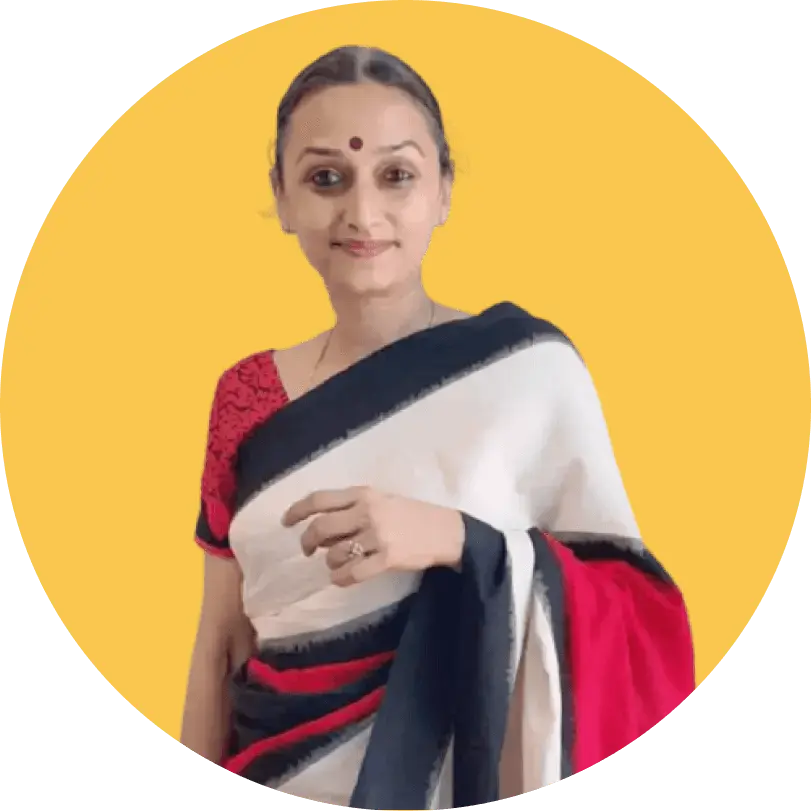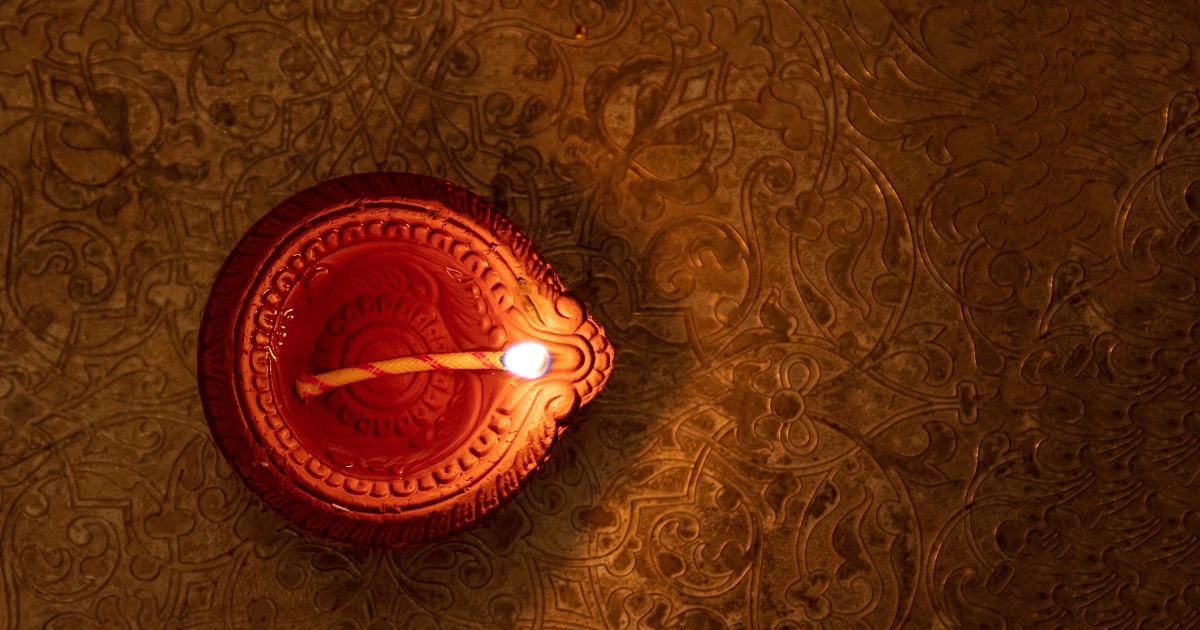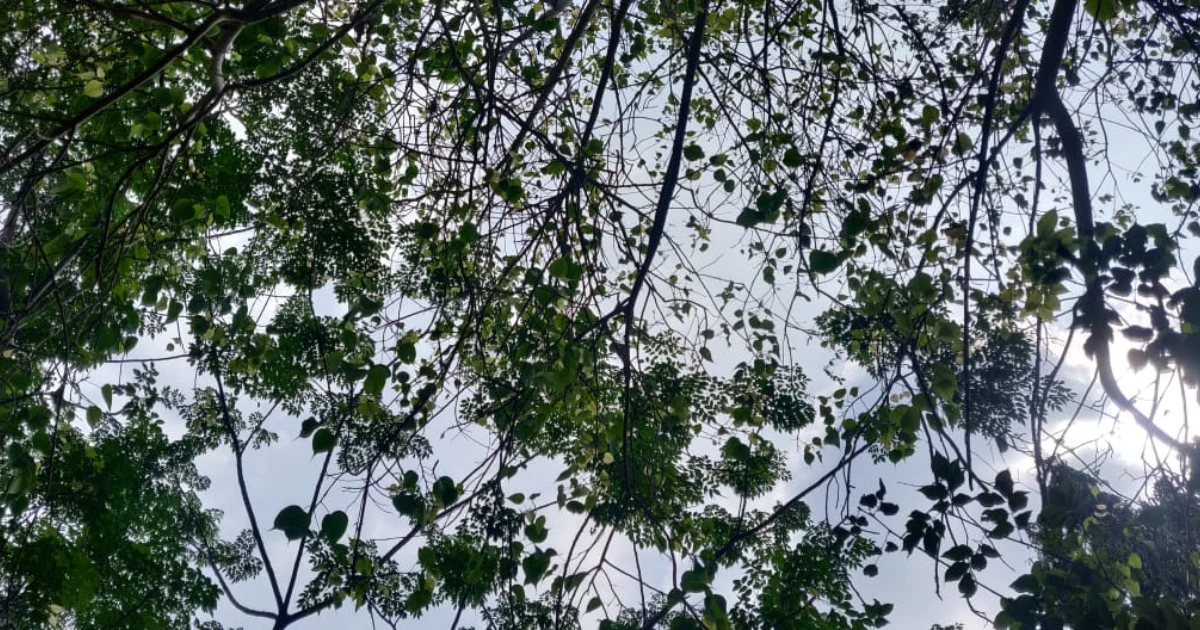When I first visited Eugene, USA, in 2014 I was pleasantly surprised to find myself amongst a small community of non-Indian Hindus. In terms of dedication, service and sincerity of practice they seemed to be far ahead of any deracinated Indian Hindu. This was not a Hare Krishna group, nor a Swaminarayan group which are the two major Hindu-makers outside of India. Nor did they belong to any of the Isha Yoga, Art of Living, Amma, and other similar global traditions. Here was a quiet community going about its business even more quietly. How could two functioning Hindu shrines be maintained here, for more than a decade, without being known to the outside world?
Personal transformation is silent and subjective. When it happens, no one needs to goad us into submission or sādhanā, that is the natural outcome. To see the men and women of this small town go about leading lives as dhārmika Hindus; doing daily pūjā-s and japa-s, studying Sanskrit, maintaining two shrines, conducting homa-s, studying Vedānta diligently, hosting Swamini-s, it was all very inspiring. This visit helped me strengthen my own daily sādhanā. Previously, like most people, there had been strong intent but that translated into practice only in spurts. After my extended summer stay at Eugene, following a regular routine was no longer a hurdle. I had to simply picture Ramagiri ji filling gas in his car wearing his trademark dhoti kurta, of Janani ji getting up at brahma muhurta to dress the deities, or Gordon ji assisting in the upkeep of the Dakṣiṇāmūrti shrine.
Let us delve into the life of Smt. Kate Herse who lives with her husband in Eugene in their beautiful flower-bedecked home, along with their pet dog, her two children happily settled. What is the main motivation behind her adopting a new culture? What led her to it? Why does she keep at it despite the evident challenge – that of self-identity and acceptance by the host community – are these really as big issues as they are made out to be? What did she struggle with, if at all, to become a vaidika Hindu?
When something rings as true as the teachings of Advaita Vedānta did to me, over ten years ago when I first heard Swamini Svatmavidyananda Saraswati (Arsha Vijnana Gurukulam) speak, it would have been foolish to disregard it. Thus I have continued to study with Swaminiji, and reaped the blessings ever since.
I had already been a spiritual seeker for a long time. I grew up in a rather mixed-up Christian tradition, with a father who was a confirmed atheist, a mother who was a sometimes practicing Roman Catholic, and a very religious Protestant grandmother. I was always a believer in God, despite my father’s non-belief. I think I must have been born that way, by grace, because I cannot remember a time when I did not believe. However, as much as I wanted to be a practitioner of my faith, I never could find a Christian church that I felt completely comfortable with. I found the rituals of devotion of the Catholic church to have meaning for me, but not all of the dogma. I tried other Christian churches for a while, but I gradually stopped practicing any religion. I learned something about Eastern religions in high school, enough to start me on a path that eventually led me away from Christianity. By the time I found Advaita Vedānta, I had been without a practice for many years.
I was first led to Swaminiji by an acquaintance here in Eugene, Oregon, shortly after my retirement from a career in software engineering. Good timing for me, since I did not have a good work/life balance, and my work was depleting my energy for any other pursuits. I was extraordinarily impressed with Swaminiji’s teachings. At first, that probably had a lot to do with her powerful intellectual presence and wit, but the message also worked on me. It dealt directly with who God/Īśvara is, and how the entire universe is a manifestation of that. It was something I had been waiting to hear about all my life. The Source, the Cause, is present in everything we know. To me, it made everything about life in this universe start to make sense. There was a lot more to understand, of course, and I kept going to the lectures. Pieces of the puzzle of life were starting to fall into place. There is a goal of life, and it is the knowledge of the self as nothing but the One — as Īśvara.
It was not very long before I learned about the part that devotional activities play in reaching the goal of self-knowledge. At first I felt that the devotional activities I heard about must not be for me. They were not from my culture, and I felt I did not have the background to allow me to jump into practicing them. I have never been one to jump into somebody else’s culture and pretend it was my own. I was never pressured to take part, either, for which I was thankful at the time. I was sure I would do something terribly awkward or offensive, or look foolish, if I tried. Meditation, which was not totally new to me, seemed like it was okay for me to try, but that was it.
I found out that some of the other Vedāntins in Eugene were going to start studying Sanskrit. That also seemed like it would be okay for me to try. I always had a keen interest in languages. We started the lessons in the home of a wonderful Vedāntin, we will call her H. I became acquainted with H and the others who wanted to learn Sanskrit on a more familiar level through the study, which made me feel a lot less self-conscious and more social.
H’s home houses a Dakṣiṇāmūrti Shrine, one of the two Hindu shrines we have in Eugene, the other being the Mūkāmbikā shrine. It was appropriate to have a Dakṣiṇāmūrti Shrine here, as he is the first Guru, and we are all students of Vedānta. This shrine, installed in Eugene at the disciples’ request, shortly before I joined the community, required twice-daily pūjā-s, including abhiśeka in the morning. I learned that these pūjā-s were being performed not only by H, but by several other members of the Vedānta community, many of whom had no more cultural background than I did. Still without any pressure, H convinced me that I could perform these pūjā-s sometimes, without worrying that I would make terrible mistakes. It was clear that she was not really looking for more help in getting the pūjā-s done; she wanted me to learn to do it for my own spiritual growth.
Thus I began performing morning Dakṣiṇāmūrti pūjā-s on a weekly and then twice-weekly basis. It is important that we not allow any ritual we do to become mechanical and repetitive, so I try to ensure that the beauty of it stays fresh and new for me every time I do it. Besides abhiśeka, it includes waving incense, naivedya (feeding the deities), ārati (waving of sacred flame in front of a deity) for both Gaṇeśa and Dakṣiṇāmūrti, recitation of their names with offering of flowers for both deities, and various chanted prayers. All of this was written down and explained in a notebook along with audio support so that I could follow along and perform the actions required. Though I stumbled frequently at first, by now I know most of it by heart and it has become easier. It is especially enjoyable in the spring and summer, when there are flowers in my garden that I can gather for the adornment of the deities and for offering during recitation of their names.
Sevā, especially service to the Guru, is another source of blessing for the Guru’s disciples. I am fortunate enough to have been called into the Guru’s service on several occasions as a transcriber/editor, which has been immensely beneficial to me. Swaminiji wished to have some of her lectures published in written form, as a way to spread the message of Advaita Vedānta to a wider audience. Creating the original transcriptions of the ten lectures she picked out, and then editing them several times for refinement of style and clarity, in keeping with the Guru’s wishes, was a multi-year undertaking. It was also one of the best things that could have happened to me. I was not just highly exposed to the teachings — I was immersed in them! I am blessed by this sevā many times over.
Swaminiji gives lectures on various texts and subjects regularly online via Zoom. There is an enormous library of her recorded lectures available. She also blesses Eugene with her presence usually once or twice a year and offers lectures in the Gurukulam/āśrama here. Our Eugene Gurukulam and āśrama is a private home that has an apartment dedicated for use by Swaminiji when she is here. It has a lecture hall large enough for almost twenty attendees, where we can sit at the Guru’s feet and listen to her in person. The āśrama also houses Eugene’s other shrine, the Mūkāmbikā Shrine, where regular pūjā-s are performed by the devotees who reside here, as well as by other members of the community.
Swaminiji recently conducted a ten-day retreat in Eugene. Disciples came from all over the country to attend. Our Gurukulam did not have enough space to accommodate everyone for ten days, so several members of the community hosted out-of-town guests in their own homes. And the cooking sevā was shared by all of us.
Swaminiji delivered her regular weekly classes during the retreat, but also introduced and unfolded a text selected specially for the retreat, called Vākyavṛtti. It is a dialogue between a Guru and a disciple (as so many Advaita Vedānta texts are), where the disciple asks the Guru to explain the nature of the Self, “as clearly as a fruit in hand.” The Guru then discusses tvam-pada-vicāra, or an inquiry into the meaning of “thou,” as in the mahāvākya “tat tvam asi” or, “that thou art.” Tat tvam asi is a mahāvākya because it sums up the central Advaita Vedānta concept, “You are nothing but Īśvara.” One of the verses we studied to elaborate on this was:
yaḥ sākṣilakṣano bodhastvaṁpadārthaḥ sa ucyate
sākṣitvamapi boddhṛtvamavikāritayātmanaḥ
which was translated into English as:
“The Consciousness, the Self, which appears as the Witness, is that which is meant by the word “thou”. Being free from all changes, even the witnessing is nothing but the illumining power of the Self.”
Understanding of the “witness” is essential to gaining the knowledge. The first time I realized that I could actually witness my own thoughts, I realized that my mind was not actually “me” — a profound concept, and very useful in the pursuit of the knowledge
Besides offering one or more lectures every day, Swaminiji also facilitated a homa (fire ceremony) in the backyard of the Gurukulam one day. As all homa-s do, it required a great deal of preparation and planning, but it proceeded beautifully with Swaminiji guiding us through it. There was a delicious pot-luck spread in the back yard for lunch afterward, which gave us the chance to get to know new people and re-acquaint ourselves with some old friends, after not seeing much of each other in person during the pandemic.
In addition to rituals like pūjā-s and homa-s, we often celebrate important Hindu festival days. Guru Pūrṇimā is one of them. If it were not already celebrated in the tradition, I would be in favor of instituting it! We owe so much to the Guru-s who unfold the teachings to us. I know this because I had tried reading English translations of some of the Upaniṣad-s on my own before meeting Swaminiji. I took away a vague understanding that there was something there, but I could not really absorb what they were saying at all. A Guru is necessary (as per the texts too), not only to make the texts come alive and make sense, but also to resolve any questions or doubts that arise.
But that is just at the intellectual level. A Guru also blesses the disciples with so much compassion and understanding. A Guru is a cosmic well-wisher for each of us, rooting for us to reach the goal of self-knowledge. How could we not celebrate the Guru-s, at the very least once a year?
At the most recent Guru Pūrṇimā in Eugene, we had a celebration via Zoom. Swaminiji’s disciples are from all over the world, not just Eugene, so it made sense to have an online celebration that everyone could attend, no matter where they resided. (We were also still trying to protect each other from Covid as much as possible.) It was especially inspiring to have Swaminiji online with us. We did the regular evening Dakṣiṇāmūrti pūjā, with naivedya, ārati, and all the prayers, but especially for Guru Pūrṇima we included a recitation of the 108 names of our parama Guru, as composed by Swaminiji. After all, it is clear that Guru-s do not just spring out of nothing on their own. A true Guru must come from a sound lineage.
Our parama Guru, Pujya Swami Dayananda Saraswati (Arsha Vidya Gurukulam), is very much to be praised. He gave so much in his lifetime, both as teachings and as charitable works. He gave the world a good number of new Guru-s to carry on the lineage, after fully instructing them in the vision of Vedānta. Many of Swaminiji’s disciples had been disciples of Pujya Swami Dayananda also. I never had the blessing to see him in person, but I feel just as much indebted to him as to Swaminiji. And that goes for all the Guru-s in the lineage before them, too. It gives me such a sense of groundedness to think that these teachings have such a long history. The paramparā cannot be overemphasized in importance, therefore, reciting the 108 names of our Guru’s Guru was very appropriate on Guru Pūrṇimā.
It is amazing to me that I was able to “stumble onto” this tradition. I had never even heard the term “Advaita Vedānta” when I went to my first lecture by Swaminiji. As a Westerner, I probably took longer than someone from India would to really start to understand what it was all about. How remarkable that I found it, and how remarkable that I actually have a Guru with whom I can keep studying it, right here in Small Town, USA, half a world away from its origins. I overflow with gratitude.
After my 2014 visit, I went back to Eugene in 2016 and as recently as this summer in July 2022. Outwardly, nothing has changed and everything runs like clockwork as before, but the people themselves have undergone a tremendous transformation. Daily consistent practice has turned them into a force to be reckoned with, making for a community that I am proud to call my own. The love, generosity, acceptance, understanding of who we are and our place in the world, has created this oasis of gentle living that nourishes just by its presence. Indian born Hindus like myself visit once every few years, and this interaction is definitely worthwhile for all involved, but Eugene has its own Hindus and does not really need any validation.
As discussed here in a previous article Conversion to Hindu Dharma, we see from Smt. Kate Herse’s personal account too, that her being born in the United States did not prevent her from learning the Upaniṣad-s, leading a dhārmika life, and living as a Hindu. Caste played no part at all in her journey. What is required though is adherence to duties and norms of the sampradāya that she has chosen, and that she does, with great affection and reverence.







